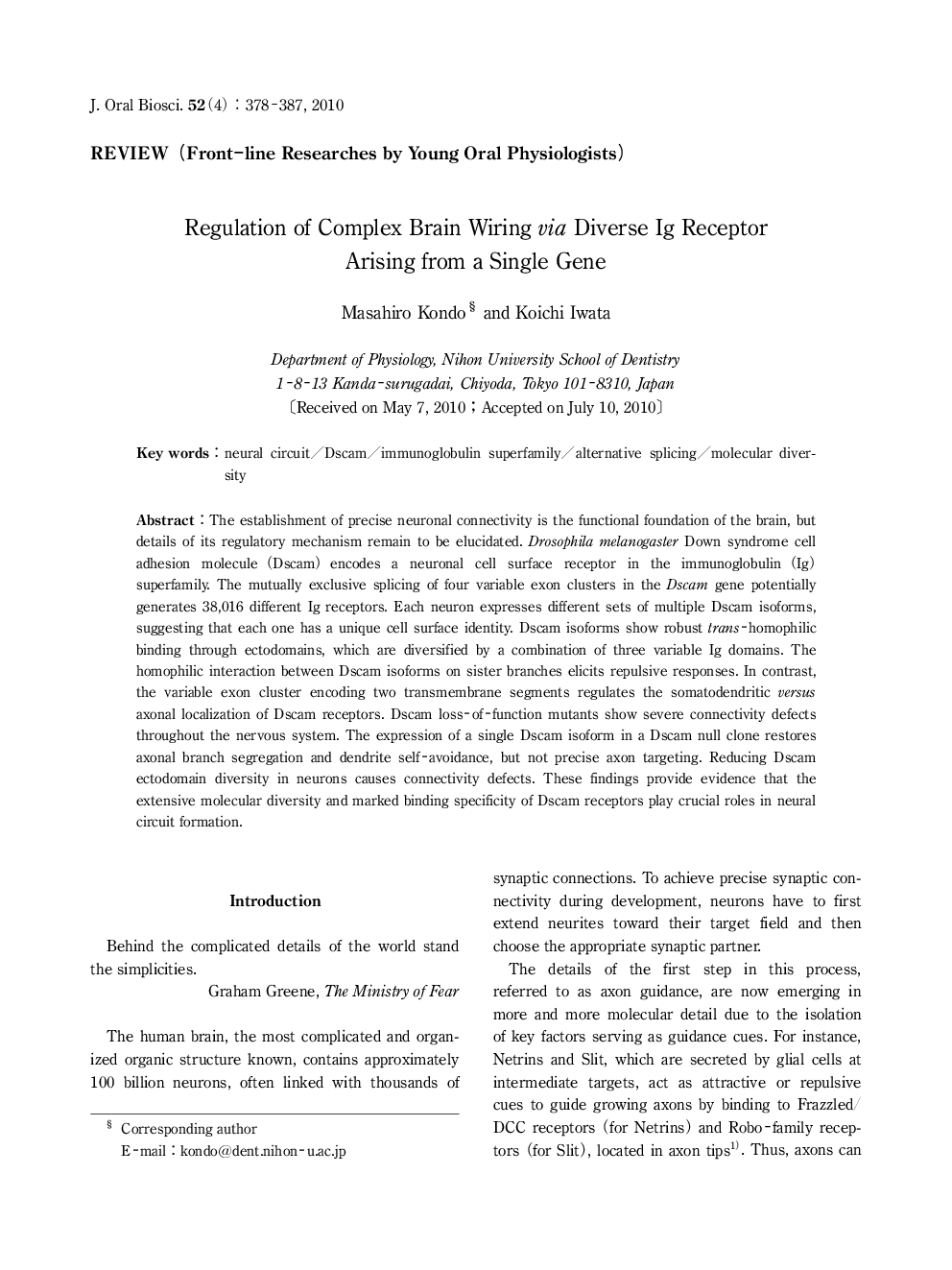| Article ID | Journal | Published Year | Pages | File Type |
|---|---|---|---|---|
| 2776819 | Journal of Oral Biosciences | 2010 | 10 Pages |
The establishment of precise neuronal connectivity is the functional foundation of the brain, but details of its regulatory mechanism remain to be elucidated. Drosophila melanogaster Down syndrome cell adhesion molecule (Dscam) encodes a neuronal cell surface receptor in the immunoglobulin (Ig) superfamily. The mutually exclusive splicing of four variable exon clusters in the Dscam gene potentially generates 38,016 different Ig receptors. Each neuron expresses different sets of multiple Dscam isoforms, suggesting that each one has a unique cell surface identity. Dscam isoforms show robust trans-homophilic binding through ectodomains, which are diversified by a combination of three variable Ig domains. The homophilic interaction between Dscam isoforms on sister branches elicits repulsive responses. In contrast, the variable exon cluster encoding two transmembrane segments regulates the somatodendritic versus axonal localization of Dscam receptors. Dscam loss-of-function mutants show severe connectivity defects throughout the nervous system. The expression of a single Dscam isoform in a Dscam null clone restores axonal branch segregation and dendrite self-avoidance, but not precise axon targeting. Reducing Dscam ectodomain diversity in neurons causes connectivity defects. These findings provide evidence that the extensive molecular diversity and marked binding specificity of Dscam receptors play crucial roles in neural circuit formation.
